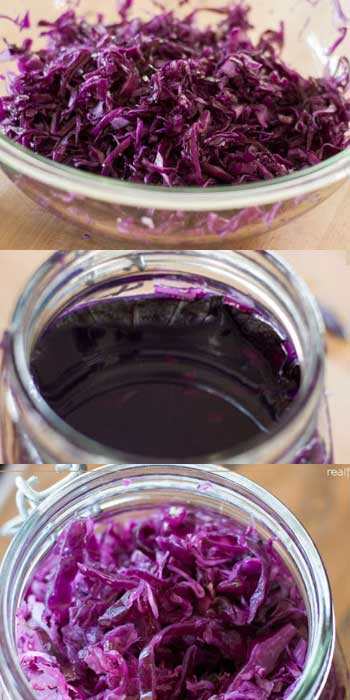Sauerkraut
Here’s a simple recipe for fermented cabbage, also known as sauerkraut. Daily eating a small amount of fermented foods will help to increase and support the good bacteria in your
gut. Fermented raw vegetables are rich in active probiotics, nutrients and digestive enzymes.
“Lactobacilli produce lactic acid and are used for many different things, including yoghurt production and the maintenance of healthy intestinal micro-flora. Lactobacilli are commonly associated with the gastrointestinal tract of humans.” ¹
Lactobacilli are naturally occurring lactic acid bacteria found on vegetables, herbs and fruits. They convert starches and sugars in foods into lactic acid, which acts as a preservative and promotes the growth of beneficial bacteria in our intestines. If you regularly experience indigestion, gas, acid reflux or bloating, try eating some fermented foods with your meals.
70% of our immune cells reside in the gut. Keeping our digestive system healthy helps to strengthen our immune system. Fermented foods and beverages are a simple, tasty way to support both our digestive and immune systems.
Suggested vegetables to ferment: red or green cabbage, carrots, beets, apples, herbs and spices.
Fermented Cabbage Recipe (Sauerkraut)
Ingredients:
- 1 fresh cabbage
- 1 – 3 tablespoons sea salt
You will need a mason jar or other jar with an airtight lid.
Directions:
- Peel the outer leaves from the cabbage and set one leaf aside for later.
- Shred the cabbage with a knife, grater, or food processor.
- Place the shredded cabbage and salt in a large bowl.
- Knead the cabbage for about 10 minutes or so, until it releases its juices.
- Tightly pack the cabbage and liquid into a mason jar.
- Ensure the brine covers the cabbage. Otherwise, bad bacteria might grow in your ferment.
- Use the cabbage leaf you set aside to cover the cabbage and keep it submerged in its brine.
- If the cabbage does not produce enough brine to keep its contents completely submerged, mix 1 teaspoon salt in 1 cup water and use it to cover the cabbage by one inch.
- Close the jar and leave to ferment, in a cool place for 4 days or longer. The longer it sits the more it has time to affect the texture and taste. Leave it until you like the taste of it, then refrigerate. The flavours will continue to develop once refrigerated but at a much slower pace.
References
(1) Lactobacillus. Online article. Available at: https://microbewiki.kenyon.edu/index.php/Lactobacillus

